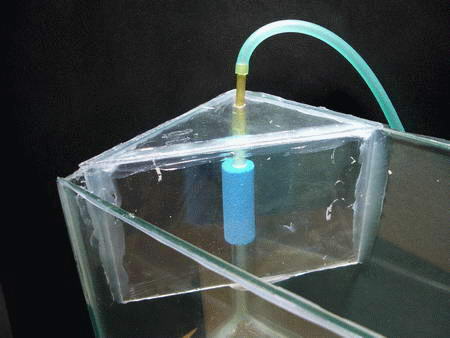As you can see in the
illustration, it is a fairly easy thing to create. A few tips to make
it actually work properly though:
- Silicone all areas to ensure a tight seal, this will prevent any
bubbles from escaping into the water column as well as preventing water
and salt creep coming out from under the lid.
- Ensure the plexiglass extends down under water at least 3 inches to prevent any bubbles getting out from under it.
- Allow the silicone to dry at least over night to ensure it does
not fall apart when you insert the airline through the hole you drilled
through the top of it.
- If you find that bubbles are still getting out from under the
trap, simply lower the amount of air being sent to the air stone.
- Since an air tight seal all the way around the top of the trap
will prevent any air from being released, you will need to drill a
small hole in the front of the trap to allow air to escape, if not the
air pressure will force its way out of the top airline hole along with
a bit of moisture which can collect and allow water to escape.

In action with my "Pet Rock" Desk Tank



